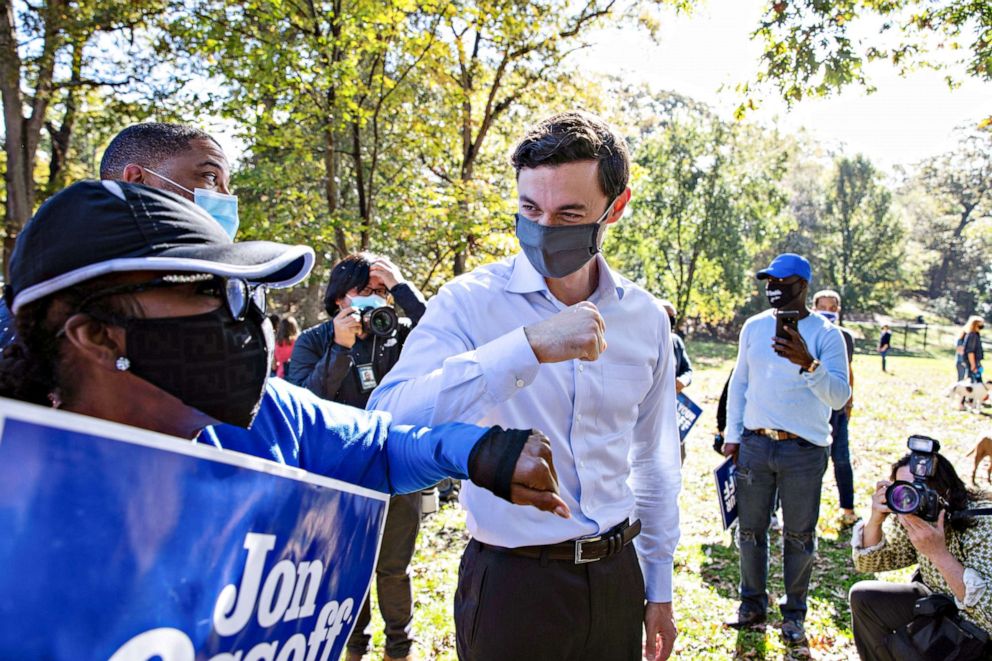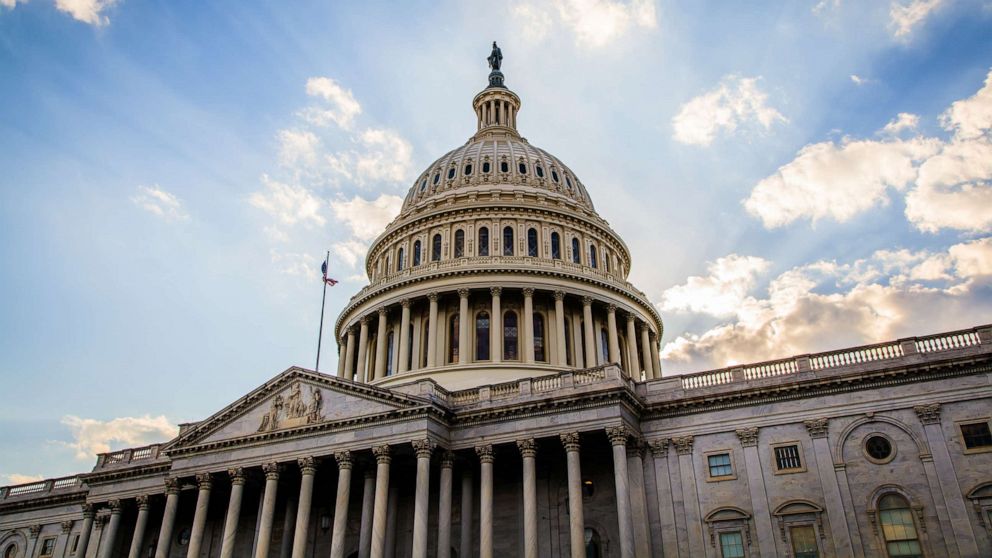How the election impacts balance of power in the Senate
The control of the U.S. Senate hangs in the balance, with four races in three states still undecided days after the general election. With Joe Biden now the apparent winner of the presidency, the Democrats have some help in their hopes for a majority.
The chamber appears to be deadlocked 48-48 as of Saturday afternoon, based on ABC News projections, with Democrats appearing to flip two seats and Republicans one so far.
Four races are still undecided, including two in Georgia that are projected to go to a runoff. That leaves the question of majority control -- and if Biden will be buoyed by a Democratically-controlled Senate and House -- likely unclear for several more months.
Up 1, down 1
With Republicans holding a 53-47 majority going into election night, Democrats needed to win back at least four seats -- three, if they also won the White House, since the vice president breaks 50-50 ties -- for control of the Senate.
The last time Republicans and Democrats wrestled over control for the chamber two years ago, the GOP expanded its majority, reinforcing its influence over the president’s agenda, Cabinet and judicial nominees.
This year, the contours of both party’s front lines ran through roughly a dozen competitive states. Republicans were defending over 20 seats, a less advantageous map compared with Democrats, who only had 12 incumbents seeking another term.

Maine Sen. Susan Collins and Colorado Sen. Cory Gardner, two of the most endangered Republicans, were seeking reelection in states won by Hillary Clinton in 2016.
For Democrats, only Michigan Sen. Gary Peters and Alabama Sen. Doug Jones are competing in states President Donald Trump won in 2016.
In those races, each party likely flipped one seat, with ABC News projecting that both Gardner and Jones have lost to their challengers. Meanwhile, Collins and Peters appear to have held on to theirs.
Democrats do appear to have gained another seat in Arizona, where ABC News has projected that Mark Kelly won over Sen. Martha McSally, the incumbent who was appointed to fill the seat of the late Sen. John McCain, in a special election.
All told so far, as of Saturday afternoon, Democrats are projected to have gained one seat and Republicans to have lost one. Add in the two senators who caucus with the Democrats, and the chamber is deadlocked 48-48. With Biden the apparent president-elect, that now means Democrats need to win two more seats to get a majority in the Senate, with the vice president breaking the tie.
The 4 undecided races
All eyes are on four Senate races that have not yet been projected.
Two in Georgia may determine the Senate majority control, and ABC News has projected that both will go to a runoff on Jan. 5.
Georgia election law requires a candidate to secure over 50% of the vote. In the highly competitive campaign between Republican Sen. David Perdue and Democratic challenger Jon Ossoff, the incumbent is currently leading, but is just under the 50% threshold needed to avoid a runoff.

In the crowded special election, the top two finishers are Democratic challenger Raphael Warnock, with 33% of the vote, and Republican incumbent Sen. Kelly Loeffler, with 26%, advancing the two to the runoff.
In the other uncalled races, Alaska Republican incumbent Dan Sullivan leads by a 31-point margin as of midday Saturday, with a little more than half of the votes reported.
Over in North Carolina, Republican Sen. Thom Tillis has a slight lead on Democratic challenger Cal Cunningham, with over 95,000 votes as of Saturday afternoon and 95% of expected votes reported.
Impact of COVID-19
Complicating the race for the GOP, it seemed, was the coronavirus pandemic, which has upended nearly every aspect of the election. The party that once saw its most vulnerable contained to a handful of seats was fighting to hold on over an expanded battlefront throughout the year.
With the president’s handling of the coronavirus pandemic sinking his popularity, the number of competitive races across the map expanded beyond battleground states like Arizona, Maine and North Carolina into traditionally red territory like Texas, Georgia and even South Carolina, where Democrats became more bullish about their prospects.
Some of the most vulnerable Republicans, including Sens. McSally of Arizona, Gardner of Colorado, Collins of Maine, Tillis of North Carolina, and Joni Ernst of Iowa, sought to put distance between themselves and the president by cultivating their own local brands and running their own campaigns.
In the final days leading up to the election, the outlook appeared increasingly bleak for Republicans -- so much so that even Trump admitted it will be "very tough" to keep the Senate, according to a Washington Post report about his remarks at a private fundraiser in October.
In the days since the election, the Senate races weren't the decisive blowout the Democrats were hoping for, but the majority is still up for grabs. With the Georgia runoffs not until early next year, it may be unclear if the Republicans still hold control until two weeks before the inauguration.




